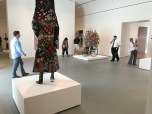While finishing my undergraduate degree I worked as the “chief engineer,” really just the head maintenance man, at a small hotel in downtown Denver. The hotel had four levels of open parking decks with the 10-story hotel above. That meant that the piping for the fifth floor was in an insulated suspended ceiling above the fourth floor parking deck. But those ceiling panels were occasionally blown out leaving the piping above exposed. When fall came we would go through and replace the panels to protect the pipes from freezing.
But fall is Denver’s windy season and the fall of 1979 was no exception. Panels kept blowing out and we needed a permanent way to keep them in place. I told the hotel’s manager that we needed to spend some money on a technique to make sure the ceiling panels stayed intact. But he didn’t want the expense and having recently transferred to this hotel from one in Hawaii he didn’t see the need. ”It was OK last year,” he told me, “ so just do what you can without spending any more money.”
On November 16, following a very windy few days, the temperature dropped to minus 20. At 3:00 a.m. I got a call from the front desk and could hear what sounded like a waterfall in the background. Water was pouring into the lobby from above. Multiple ceiling panels had blown out over the previous couple of days and with the sudden cold snap many of the pipes above had frozen and broken. Even a 6-inch cast-iron fire main had frozen and cracked, sending an alarm to the fire department which then evacuated the hotel since there was now no fire protection.
After four days of putting everything back together, I got fired. And it really was my fault, since I knew what could happen and didn’t insist that it was done right. I didn’t make the case strongly enough and it created a disaster.
I was reminded of that incident today when I read OSHA’s report on the March 15, 2018 collapse of the pedestrian bridge at Florida International University. Anyone involved in construction should read this report to reinforce the importance of making your case when you know something is wrong. The contractors knew that the cracks they were seeing in the concrete were serious and getting worse but they acquiesced to the engineer who kept telling them it wasn’t dangerous. The result was six people dead and one seriously injured, including two of the workers who were post-tensioning the bridge at the engineer’s instruction in an attempt to stop the cracks.
I’m not equating a frozen hotel where no one was even injured with this much worse tragedy. And hopefully few of us will ever face a disaster of this magnitude, but as construction professionals it is our job to make sure things are done right and to make our case in the face of a dangerous situation. Don’t just turn away and hope everything will turn out fine.



